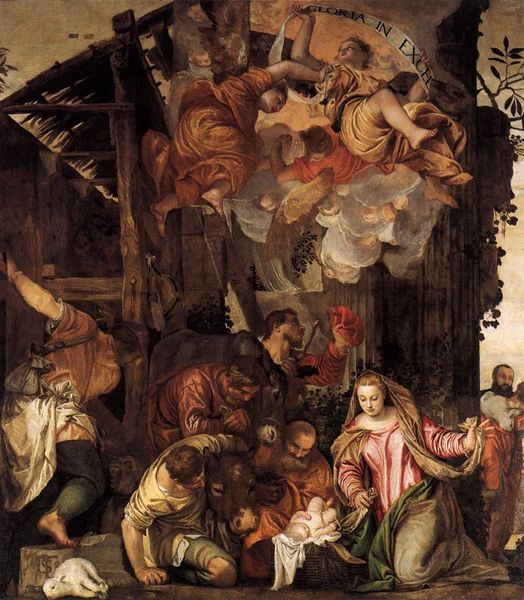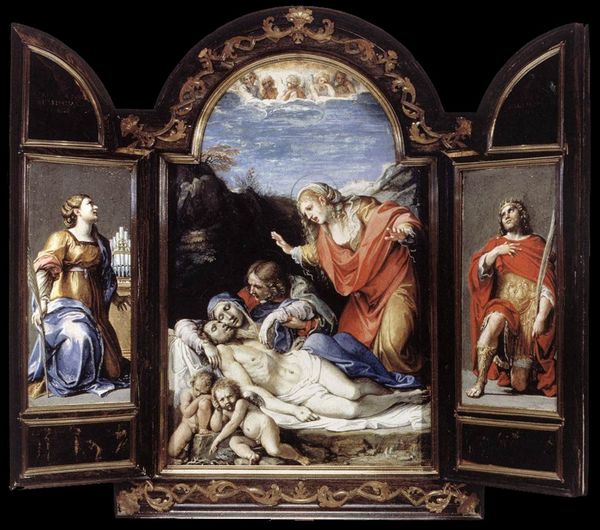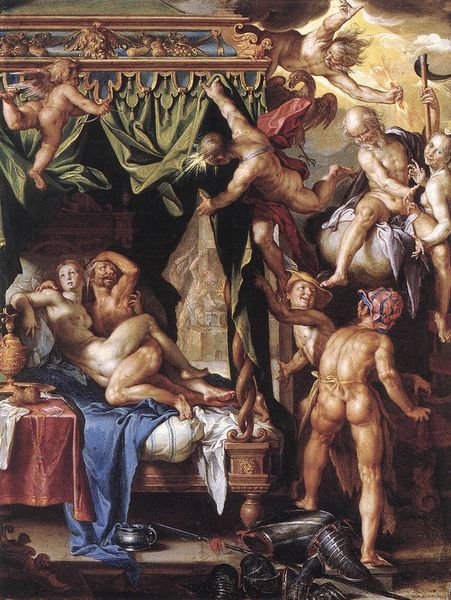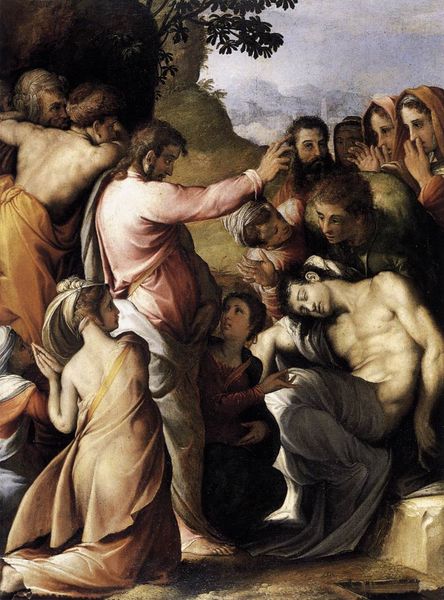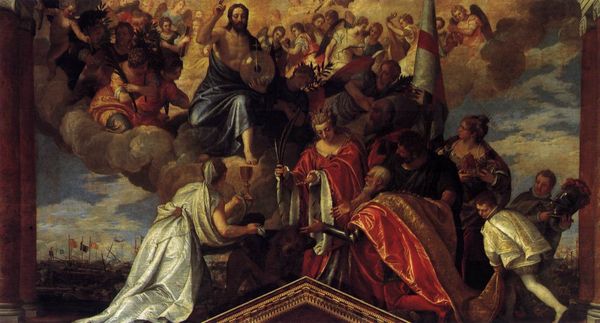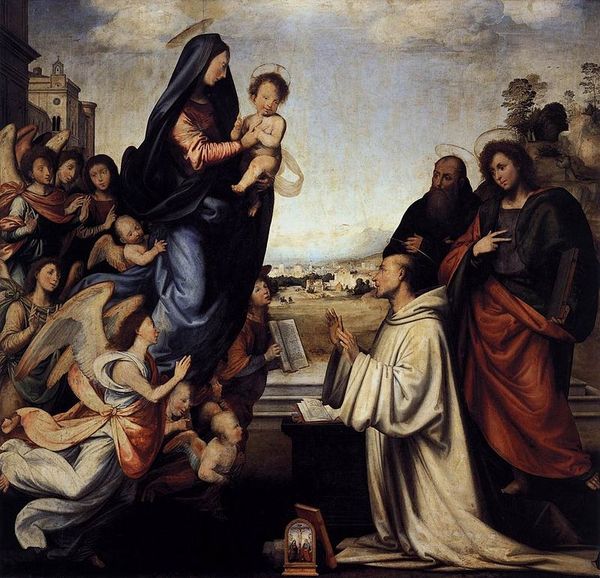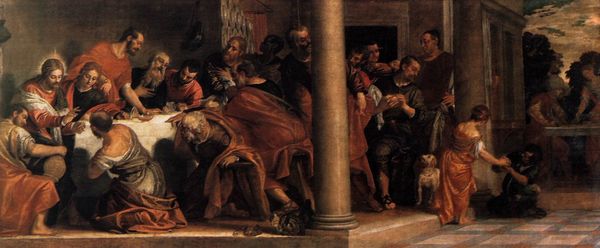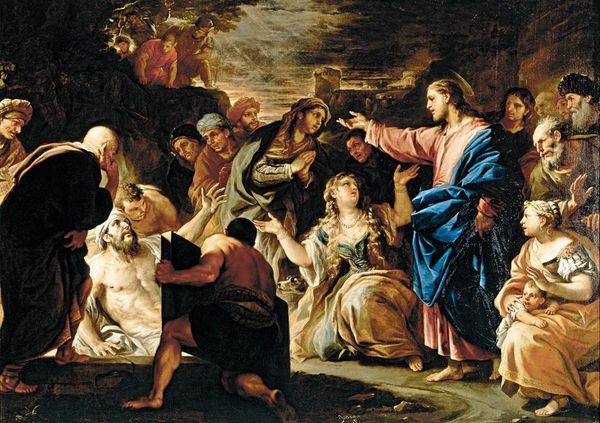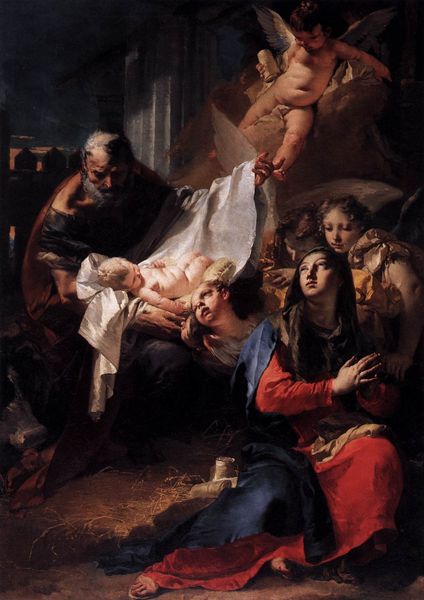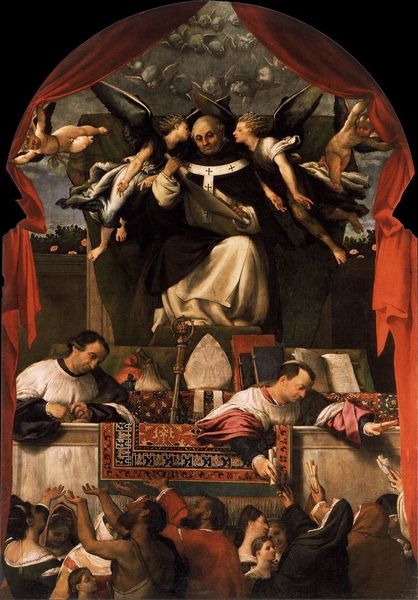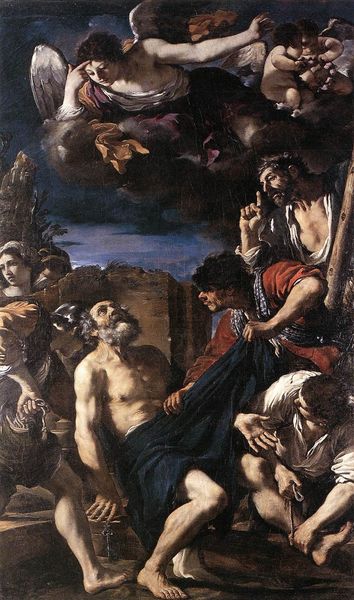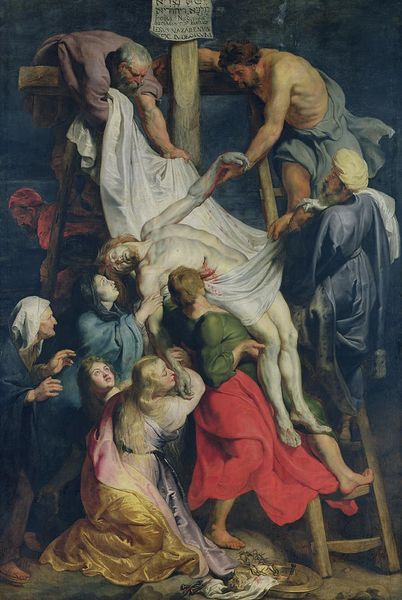
Descent from the Cross - triptych 1614
0:00
0:00
peterpaulrubens
Cathedral of Our Lady, Antwerp, Belgium
painting, oil-paint
#
allegory
#
baroque
#
painting
#
oil-paint
#
perspective
#
figuration
#
oil painting
#
group-portraits
#
flemish
#
history-painting
Dimensions: 150 x 420 cm
Copyright: Public domain
Peter Paul Rubens painted this monumental triptych on wood panels for the Cathedral of Our Lady in Antwerp. It is a magnificent example of the traditional, skilled application of oil paint during the Baroque period. If you look closely, you can see how Rubens has used traditional materials in unconventional ways. The density of the pigment and layering of the brushstrokes give the painting a rich texture and depth. But the way he's worked the paint, it's not just about smooth illusionism. You can see the evidence of labor, the physicality of the work. The sheer scale of the triptych is impressive, underscoring the labor and skill required to produce it. It is a reminder of the highly developed workshop system, which ensured a market for this type of large-scale, labor-intensive production, blurring the lines between individual artistic genius and collective craft production. So, the next time you see a painting like this, remember that its meaning comes not only from the image it depicts, but also from the materials, the making, and the social context in which it was created.
Comments
No comments
Be the first to comment and join the conversation on the ultimate creative platform.
